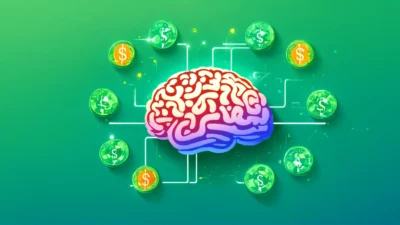What is Biohacking?
Biohacking has gained popularity in recent years, but what does it actually mean? In simple terms, biohacking involves making small, incremental changes to your lifestyle, diet, and environment to optimize your body and mind for peak performance.
The Principles Behind Biohacking
Biohacking relies on the belief that our bodies are intricate systems. Through technology, nutrition, and lifestyle changes, we can enhance or optimize them. By targeting specific areas, biohackers aim to improve physical and cognitive abilities, boost health, and promote longevity. Trusted resources like The Biohacker’s Handbook by Olli Sovijärvi and How to Biohack Your Body by David Asprey provide a wealth of information on these principles.
Common Biohacking Practices
Biohacking can take many forms, ranging from simple lifestyle changes to advanced techniques. Here are some common practices:
- Intermittent Fasting: By cycling between periods of eating and fasting, you can improve metabolic health. Resources like The Complete Guide to Fasting by Dr. Jason Fung explain the science behind intermittent fasting.
- Cold Exposure: Cold showers or ice baths stimulate circulation, reduce inflammation, and help with recovery. For more details, check out What Doesn’t Kill Us by Scott Carney.
- Nootropics: These supplements enhance cognitive functions like memory and focus. Smarter Better Faster by Charles Duhigg and websites like Examine.com offer evidence-based information on nootropics.
Advanced Techniques for Biohacking
For those looking to go deeper, more advanced methods like genetic testing and personalized medicine offer a tailored approach to biohacking. Genetic testing helps you understand your body’s unique needs, while personalized medicine adjusts your diet and lifestyle accordingly. Some biohackers even use implants or wearables to track health data in real-time. For scientific backing on genetic testing, you can refer to resources like The Personalized Medicine Revolution by Pieter Cullis and studies published in the National Institute of Health (NIH) journals.
Benefits of Biohacking
By adopting biohacking practices, you can experience several benefits, including:
- Improved Physical Health: Specific interventions can boost strength, endurance, and vitality. Websites like Healthline and WebMD offer general guidelines on how to improve physical health with biohacking.
- Enhanced Mental Performance: Biohacking improves focus, clarity, and memory. The Brain That Changes Itself by Norman Doidge provides valuable insight into the mind’s plasticity.
- Increased Lifespan: Many biohackers aim to slow aging and extend their life expectancy. Lifespan: Why We Age—and Why We Don’t Have To by David A. Sinclair is an excellent resource for learning about longevity.
Understanding the Risks
Despite its potential benefits, biohacking requires caution. Many practices lack solid scientific evidence, and some could be harmful. Therefore, you must research thoroughly, consult with healthcare professionals, and pay attention to how your body responds. Keep these risks in mind:
- Limited Scientific Backing: Not all biohacking techniques have proven efficacy. For in-depth scientific analysis, you can look at journals like The Journal of Bioengineering and Biotechnology or resources on PubMed.
- Potential Side Effects: Practices like extreme fasting or using nootropics could have unintended consequences. Always refer to trusted health organizations like the Mayo Clinic or the FDA for information on supplements and health risks.
- Over-Optimization: Pushing your body too far may lead to burnout or other health issues. The National Institutes of Health (NIH) offers research and guidance on the risks associated with pushing physical and mental limits.
Getting Started with Biohacking
If you want to explore biohacking, begin with small, manageable changes. Here’s how:
- Focus on Nutrition and Sleep: Improving these two areas lays the foundation for overall well-being. Books like Why We Sleep by Matthew Walker provide a deep dive into the importance of sleep.
- Try Basic Biohacking Techniques: Start with intermittent fasting or mindfulness meditation to observe their effects. The Minimalist Guide to Biohacking by Ben Greenfield offers practical tips for beginners.
- Track Your Progress: Use apps or fitness trackers to monitor improvements in health. Resources like MyFitnessPal or Strava can help track diet and physical performance.
Conclusion
Biohacking offers a fascinating opportunity to enhance human performance. By taking a personalized, science-based approach, you can unlock your potential and live a healthier life. However, always approach biohacking with caution, conduct thorough research, and consult with professionals to ensure safe and effective practices.




